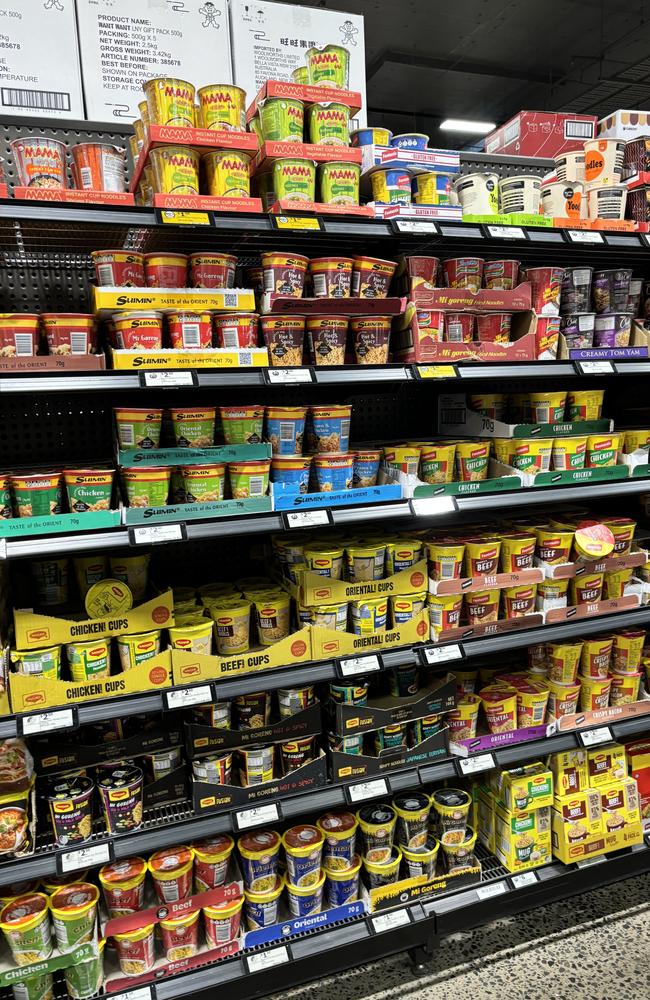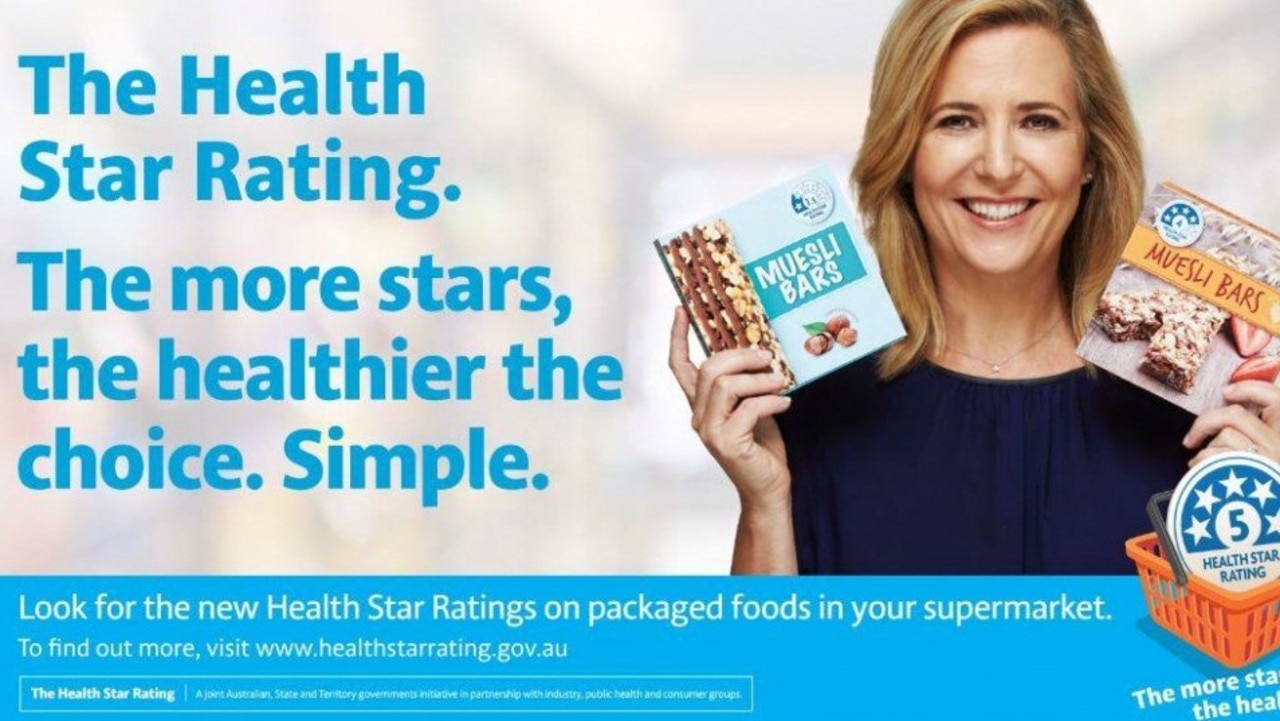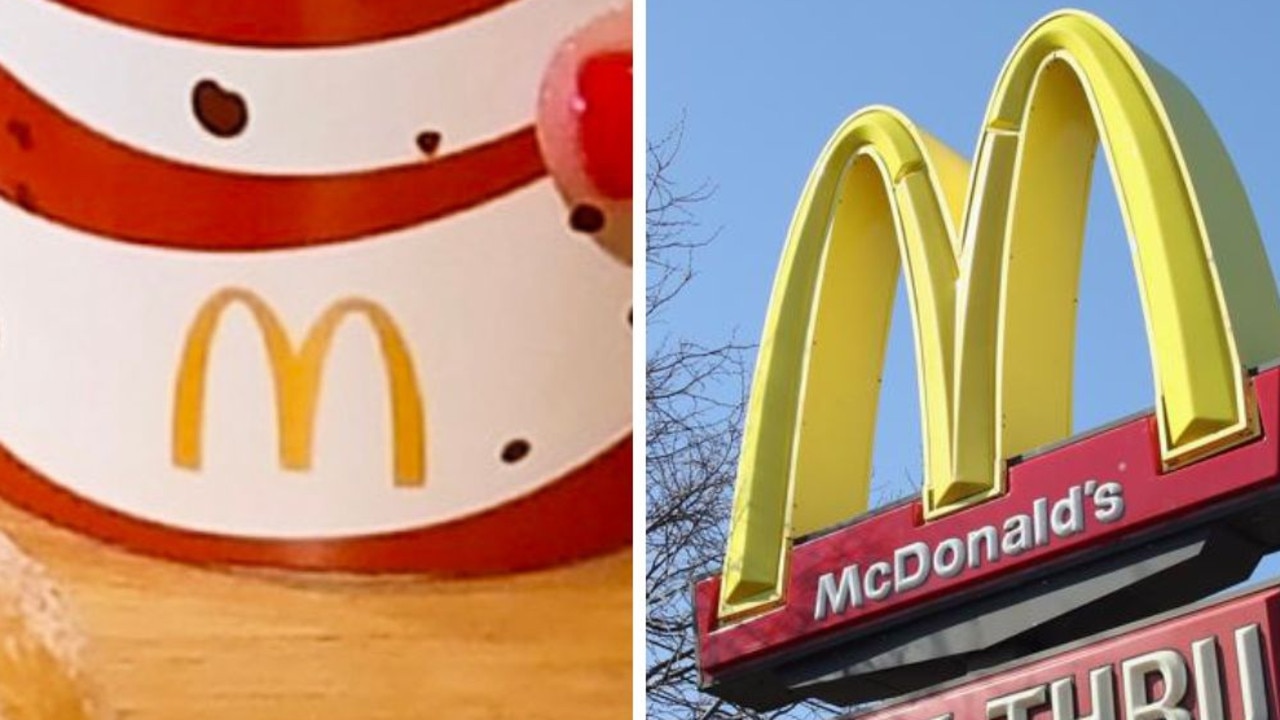Pediatric nutritionist reveals truth about favourite kids’ snacks
Critics have called out a food rating system parents used on 40 per cent of products stocked in major Australian supermarkets.

Food
Don't miss out on the headlines from Food. Followed categories will be added to My News.
Health experts are calling for a shake-up to health star ratings on popular food products, with one warning it can give consumers false impressions of the true nutritional value of their produce.
The Health Star Rating was created in 2014 by Australian and New Zealand governments, and is a voluntary front-of-pack labelling system.
The system — which ranges from a half to five stars — is intended to compare similar products such as two different yoghurt pouches and is seen on large number of items sold in supermarkets such as Coles and Woolworths.
It’s calculated based on kilojoules, saturated fat, sodium, sugar, fibre, protein, fruit, vegetable, nut and legume content.
But nutritionist and mother-of-two Mandy Sacher recently called out the Health Star Rating system for “oversimplifying” food choices, claiming the scale can be “manipulated”.

“It assigns a star rating from half a star to five stars based on a set formula, without taking into account the quality of ingredients or the level of processing in the product,” Ms Sacher told news.com.au.
“Highly processed foods can receive a high rating simply because they are fortified with synthetic vitamins or have lower levels of sugar or fat compared to similar products, which doesn’t necessarily make them healthy.

“The system can also be manipulated by manufacturers to improve the star rating without truly improving the nutritional value of the food,” she added.
“They often add synthetic vitamins and minerals to neutralise the higher sugar or sodium levels, and to draw attention away from all the additives and preservatives that are present in many of these food products.”
She said another issue was that it didn’t differentiate between artificial and natural ingredients, and so while a product may have a four star health rating it could still be ultra-processed.
Ms Sacher said parents need to go beyond the Health Star Rating, which is simply one tool, and focus on understanding and reading the ingredient list and nutrition label, as well as focusing on whole foods.

She advised that parents should look out for additives and preservatives, watch out for hidden sugars and not be fooled by “fortified foods”.
“As a mum of two and a pediatric nutritionist I often deal with parents who are struggling with fussy eaters and I know first-hand how tricky this can be. The message here is not that we are not saying ‘no’ to lollies or chocolates but what we are saying is that parents deserve a proper Health Star Rating system that allows them to discern between what are ‘sometimes’ foods and what are everyday staples,” Ms Sacher said.
She said what is currently in place was misleading, and she believed that if parents knew the truth about these products they wouldn’t offer them to their kids.
Ms Sacher isn’t the only vocal critic of the system, with George Institute food governance researcher Alexandra Jones stating that while the health stars get it right, most of the time, the issue lies in the fact that only 40 per cent of products are using it.
“It uses an overall algorithm to calculate a rating, so basically foods lose points for their energy content, saturated fat, sodium and sugar, but they can get some points back for their protein, fibre content and fruit and veg content,” Jones told A Current Affair recently.
“What it does mean is you can have a product, for example a muesli bar that does have some salt, sugar in it, but it’s able to cancel out some of those points by putting in extra fibre and protein.”
Originally published as Pediatric nutritionist reveals truth about favourite kids’ snacks









